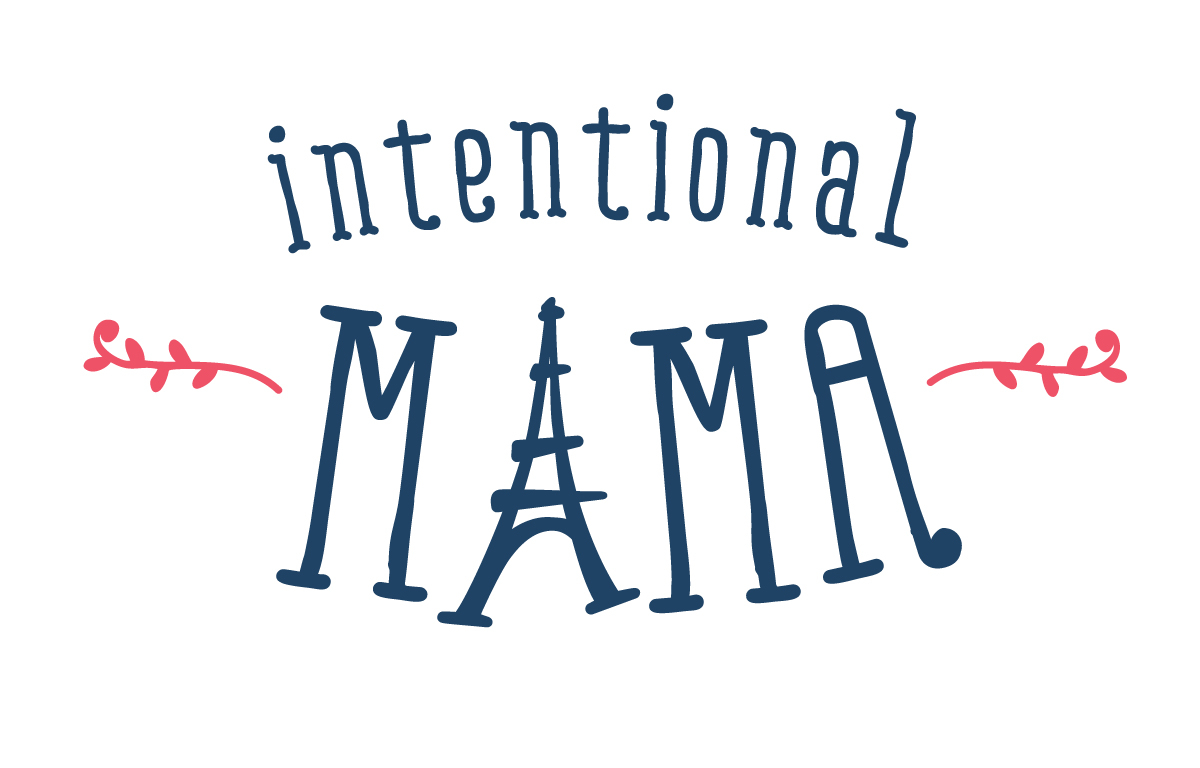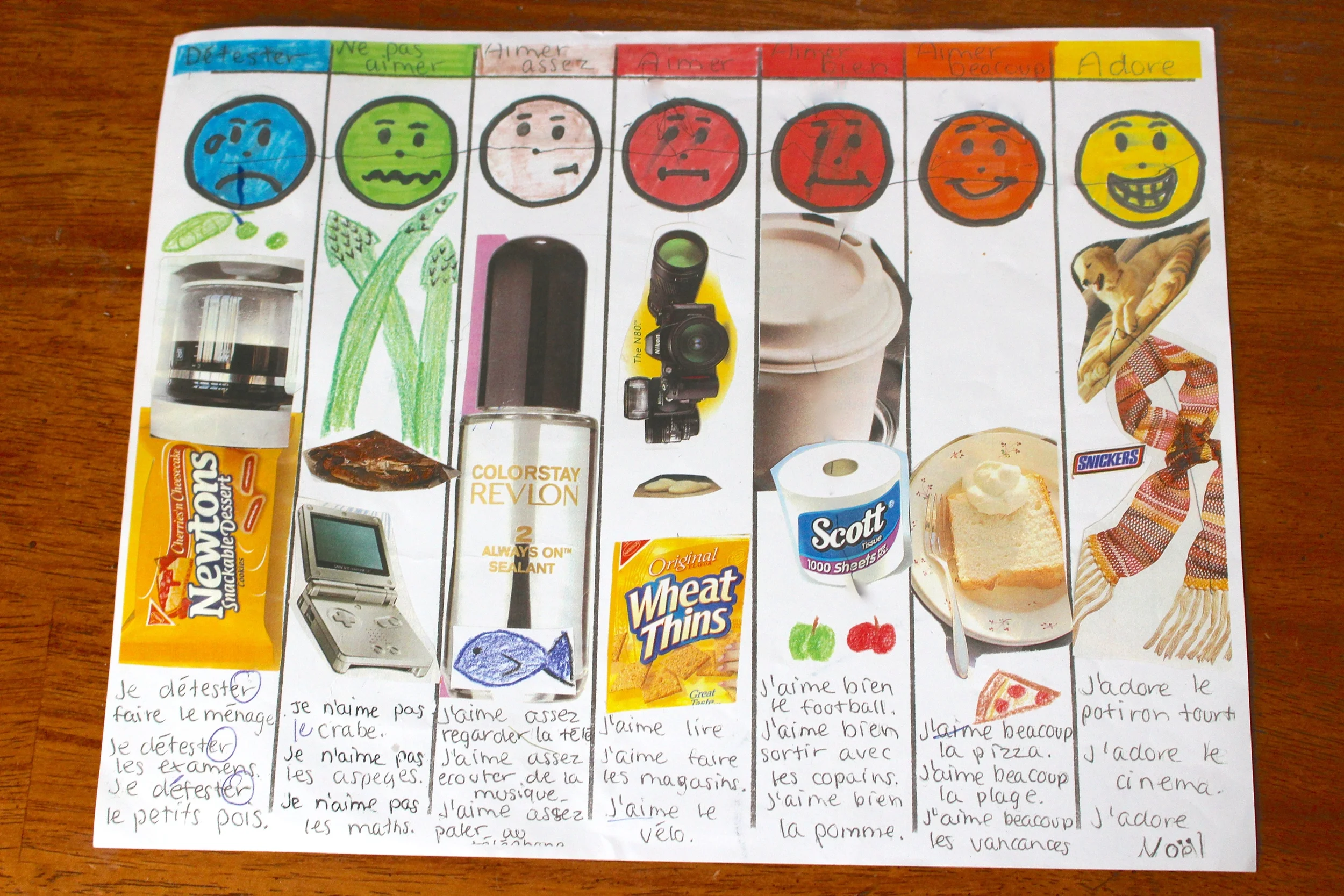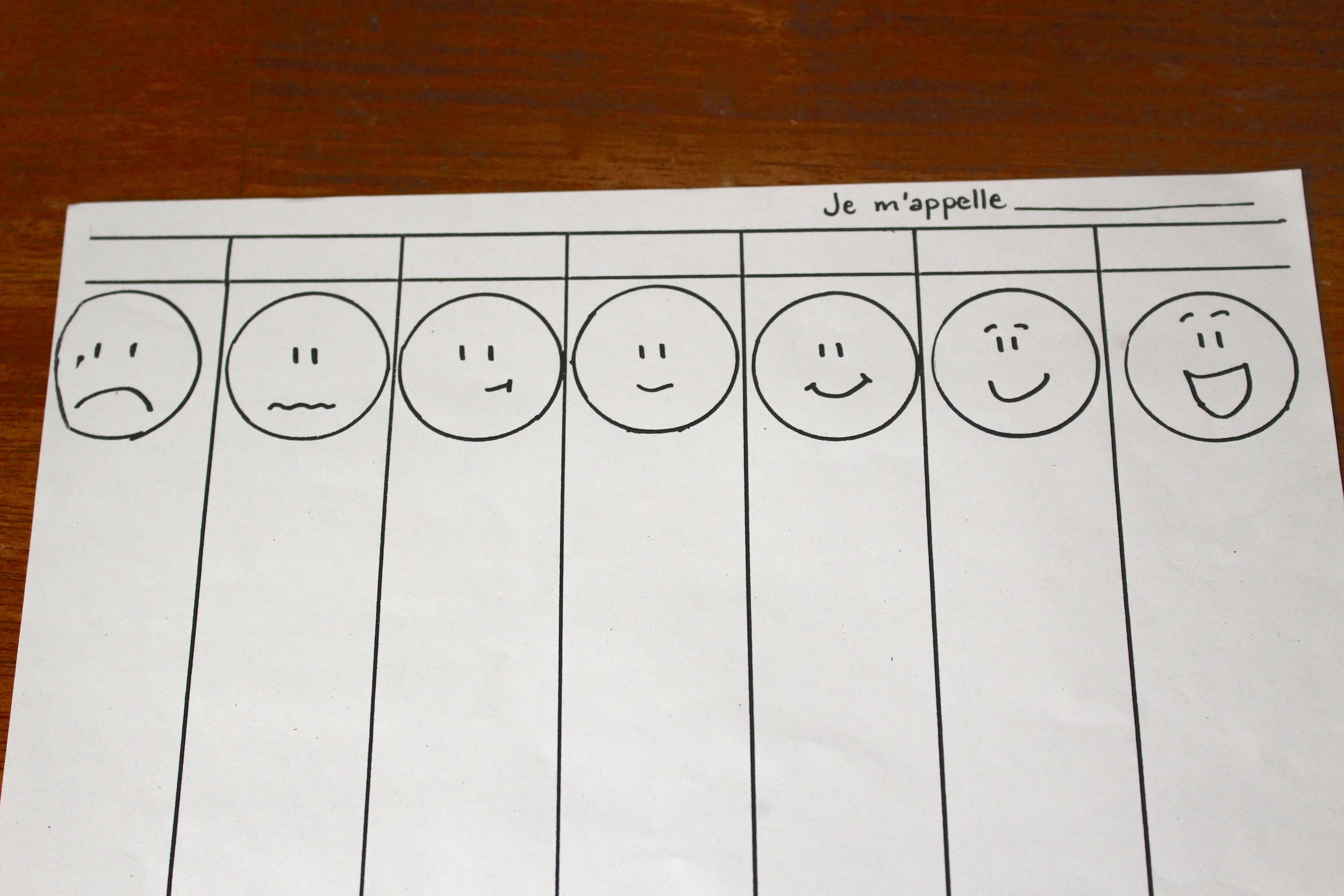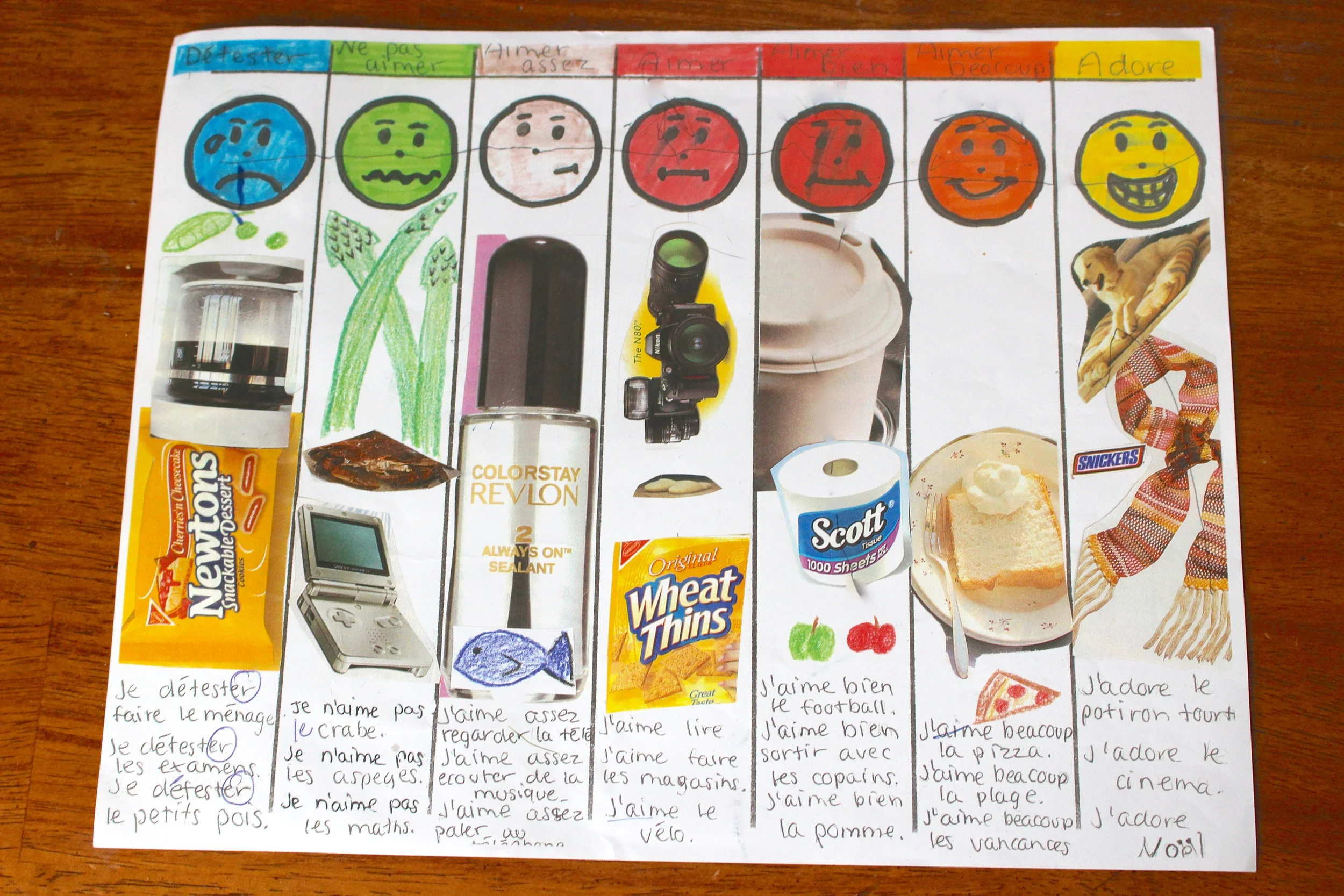Beginning French Lesson 6: Likes & Dislikes Project
One of my favorite activities to do with beginning French students is to help them create a likes and dislikes chart. The chart is fun and colorful, but what I love most about it is what it enables students to do afterwards: it provides a context for learning how to use a bilingual dictionary and helps students grasp basic French sentence construction. Essentially, this activity moves students beyond the early language stage of memorizing basic phrases and towards a solid understanding of how to create their own original sentences in French.
A likes & dislikes chart from an American high school student
For young students or those in short classes that only meet for a few weeks, you can use a simplified version of the likes and dislikes chart by having students fold a piece of paper into four quadrants and add four smiley/frowny faces that correspond to these phrases:
A simplified likes and dislikes chart quadrant that students can create from scratch
- je déteste...
- je n'aime pas...
- j'aime...
- j'adore...
High school students or those in semester-length classes (with more time to spend on this) can create a more nuanced spectrum of likes and dislikes:
détester / ne pas aimer / aimer assez / aimer / aimer bien / aimer beaucoup / adorer
A blank likes and dislikes chart
Students use the sentence starters to create several sentences of their own for each like or dislike column/quadrant. They complete their sentences using a bilingual dictionary or dictionary app. (Collinsdictionary.com is a great free online bilingual dictionary. Students can use this online dictionary to complete their charts outside of class if they need more time.)
You can help students get started by sharing your own likes and dislikes and showing how these general statements are constructed in French (using le, la, or les before a noun). Because many American students have never used a bilingual dictionary before, we chat about what makes it different from the English dictionaries they are used to--and how they can be sure they've found the correct word translation (you'll want to help them recognize the word's part of speech and the gender if it's a noun).
While they are working, check that they remember to include the definite article (le, la, or les) before their nouns and help them with pronunciation. When students have completed their sentences, they can share them aloud and see how much their classmates can understand. You may want to have students memorize sentences to share orally.
Once again, a student's completed likes and dislikes chart with sentences and illustrations
I've done this project with different groups of beginning French students over the years, and I appreciate how this simple activity helps students step away from formulaic memorization, start using a bilingual dictionary, and learn to create their own original sentences. You can also use this min-project as a basis for introducing colors and adjectives. Bonne chance, mes amis!




